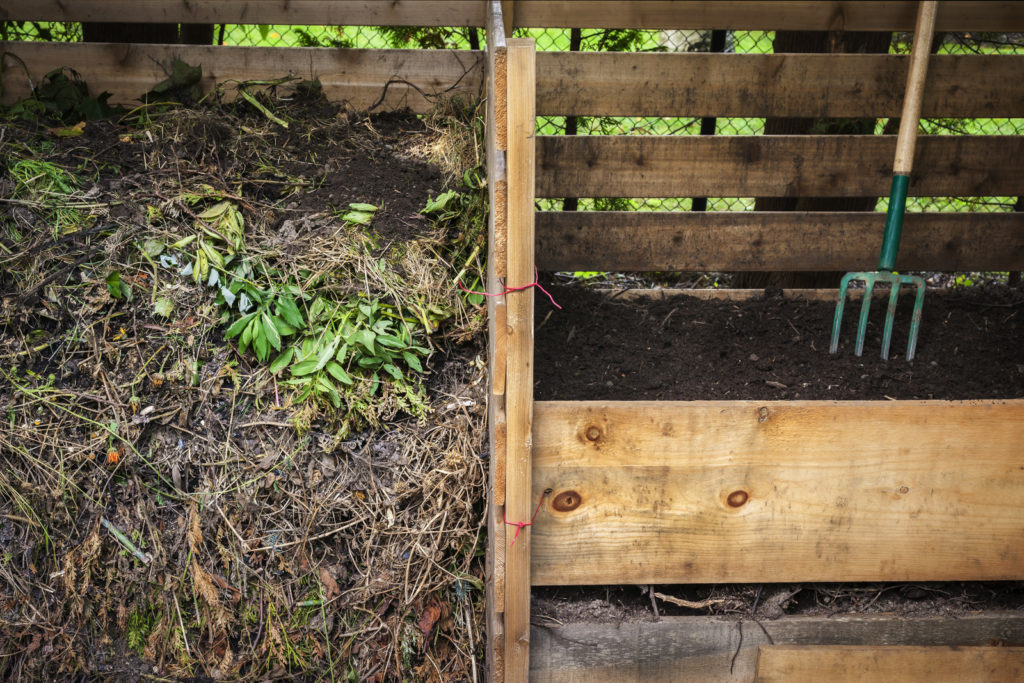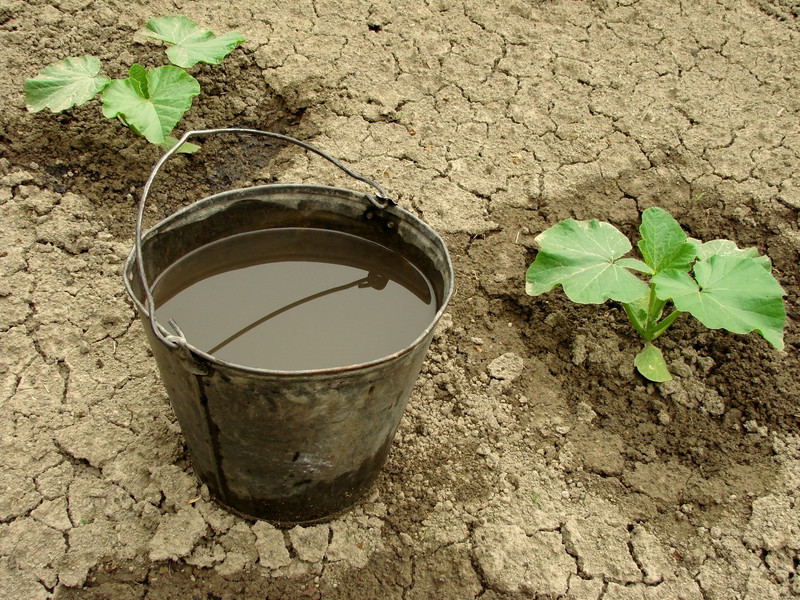Compost tea is excellent all-purpose plant food. Made from aged compost–organic materials that have finished decomposing, compost tea contains all of the major and minor nutrients plants require. It gives young plants a starter boost and older plants a pick-me-up. Not only that, but compost tea will ward off many common garden diseases and even help cure a few.
You may see different recipes for compost tea but do not fret it is easy to make. The gist of making compost tea is simple: place compost in water and let it sit for seven to ten days–depending upon the amount of compost and water–until the water turns the color of tea. That’s it; your compost tea is ready. Pour a cup of compost tea around the base of plants every two weeks or spray it on the leaves of plants as a foliar spray. (More detailed recipes for compost tea are below.)

Compost tea, like compost, contains all of the major and lesser nutrients that plants require. It is balanced plant food, meaning it contains nearly equal parts of the major nutrients nitrogen, phosphorus, and potassium (NPK), and nearly all of the lesser nutrients. Depending upon the strength of the solution it will likely measure somewhere between 0.5-0.5-0.5 and 4-4-4.
Because compost tea is delivered to plants as a solution, it is available to plant roots for uptake and use immediately. Dry fertilizers must mix with soil water to begin work. Compost tea is fast-acting.
In addition, to feeding plants, compost tea also feeds soil microorganisms that work in the soil to break down organic materials into plant foods. These same soil microorganisms feed on harmful fungi that attack plants.
Spray compost tea directly on plant leaves and stems and the beneficial microorganisms will feed on fungi already on plant leaves–fungi that cause powdery mildew, downy mildew or botrytis, and the like–or pounce on fungi spores that land on plants. (Use compost tea as a foliar spray from early spring to midsummer–allowing 4 weeks of no-spray before eating fruiting crops. Don’t use compost tea as a foliar spray on leafy crops.)
Adding aged compost, also called humus, to the soil is always a good idea. In addition to providing plants with nutrients, compost improves soil quality and the water-holding and draining capacity of the soil. As a practice, add about half an inch of aged compost to the garden each spring and fall. Use compost tea as a side dressing every couple of weeks or twice during the growing season if your plants are coming along fine.
Compost tea recipes
Recipe 1: Use a Tea Bag:
Put two shovelfuls of compost into a burlap or coarsely woven sack, laundry bag, an old pillowcase, or old pair of pantyhose, tie the top shut, and place the bag in the bottom of a bucket, trash can, or barrel. (About 1 part compost to 5 parts water.) Let it “brew” for seven to ten days. Dilute the resulting “tea” with water until it is light brown or the color of weak tea and use.
Recipe 2: No Bag, No Work:
Fill a large barrel or garbage can about one-eighth full of aged compost, then fill the barrel with water. Let the mix sit a week to ten days or so stirring occasionally. Place a portion of the mix in a watering can diluting it with clear water until the tea is light brown and use.
Recipe 3: Bucket in a Barrel:
Take an old plastic or tin household bucket and punch several holes in it. Fill the bucket with aged compost and hang it with an S-hook in a larger barrel filled with water and let the mix brew a week or two. (Again about 1 part compost to 5 parts water.) Draw from the larger barrel as needed diluting to the color of weak tea and use.
Recipe 3: Foliar Spray:
Brew your compost tea as described above. Pour the solution through a cheesecloth strainer into a hand or pump sprayer, dilute to the color of weak tea, and spray on the foliage of crops. Compost tea will act as a fungicide: beneficial microorganisms in compost tea feed on harmful fungi responsible for many foliar diseases such as powdery mildew and downy mildew.)
As you draw down the water in your larger container, simply add more. You can continue to use the “tea bag” or aged compost until the solution you are brewing is nearly clear. Mix the used compost back into your compost pile or spread it lightly across an unused planted bed. Then you are ready to start your next brew.
One note: when you are brewing compost tea, put a cover over the brew. This will keep harmful bacteria from dropping into the brew.

Manure tea
Manure tea is brewed just as compost tea (basically the same recipes). Use aged horse, cow, or rabbit manure. Be sure to brew manure tea in a permeable bag; the finer the holes in the bag the better; this will prevent weed seeds in manure from getting into your garden. Manure tea can be more potent than compost tea; it may be higher in nitrogen depending on how long the manure has aged. Use manure tea more sparingly than compost tea. Dilute manure teas so that the solution is light brown. Add manure tea to your compost tea or apply a cup of manure tea at the base of plants, not as a foliar spray.
Vegetable tea
Vegetable teas made from comfrey leaves or stinging nettles are rich in potassium and are a good mix for feeding fruiting vegetables such as cucumbers, eggplants, and tomatoes. Put the comfrey leaves in a permeable bag and brew as described above (1 part comfrey to 5 parts water). Let the solution sit for a week or so and then apply a cup or two as a side dressing at the base of plants.
Also of interest:
How to Make Comfrey Manure Tea
Articles of interest:
Vegetable Garden Diseases Problem Solver
Vegetable Garden Organic Weed Control
Vegetable Garden Organic Pest Control
Garden Planning Books at Amazon:
- Vegetable Garden Almanac & Planner
- Kitchen Garden Grower’s Guide Vegetable Encyclopedia
- Vegetable Garden Grower’s Guide
- Tomato Grower’s Answer Book



